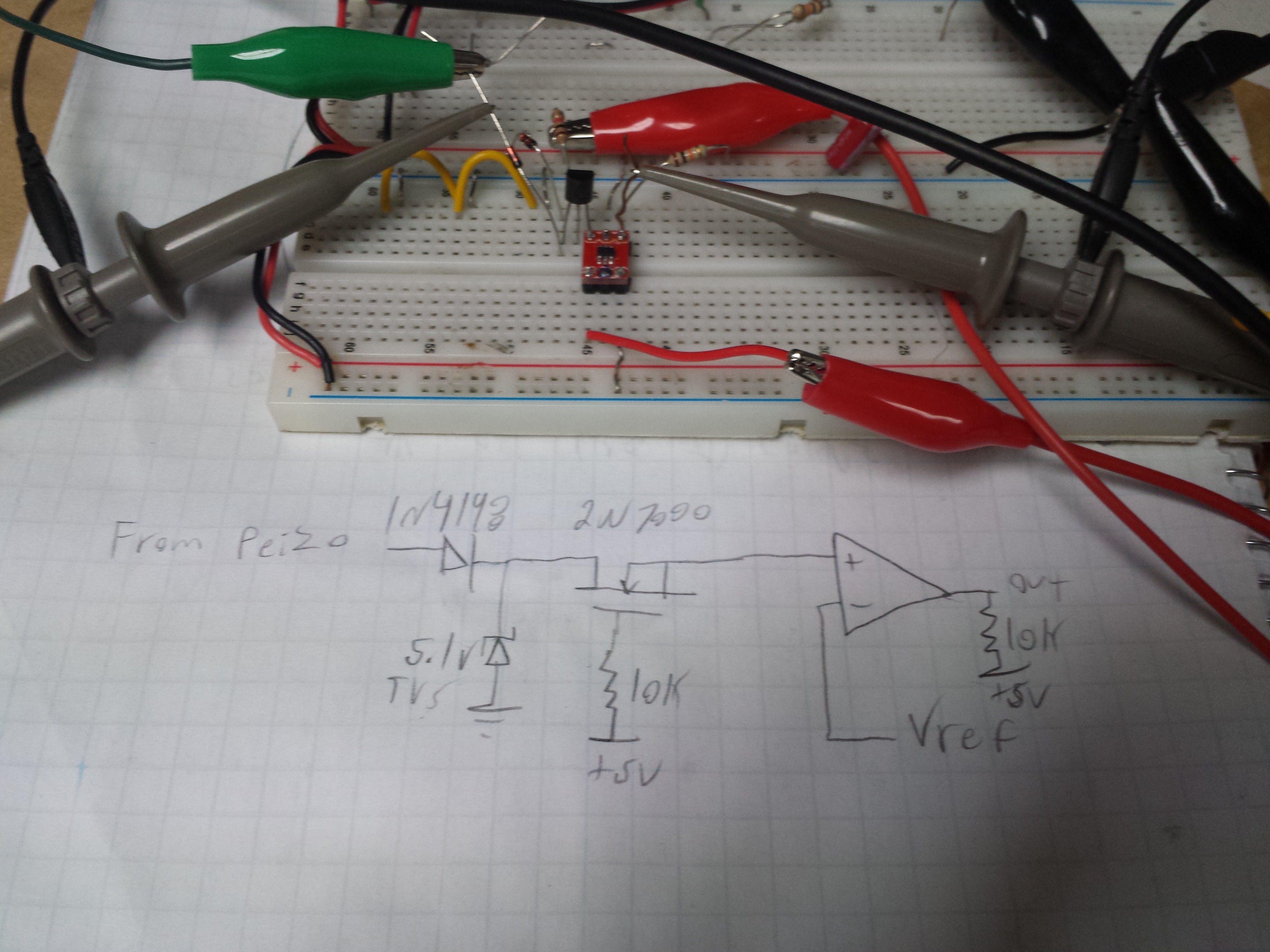Nerf Target Board
This is a Nerf target similar to a dart board witch will have a built in scoring system
This is a Nerf target similar to a dart board witch will have a built in scoring system
To make the experience fit your profile, pick a username and tell us what interests you.
We found and based on your interests.
It's been a long time since I've posted an update, you can thank school for that. Now that the semester is over time to get to work!
The core of this project is the sensor input stage. It's a fairly simple circuit. Just a comparator and a NPN Fet. I chose a single supply rail to rail comparator (MIC7221) . This keeps it nice and simple. However the input voltage can't rise above the positive rail with out risking damage. A good portion of the circuit is built around this rule.The sensors I am using can go well above this limit. To control them I placed a standard diode in it's input path. This keeps the negative ac portion out letting in only the positive part. After the diode there is a 5.1 volt TVS diode to keep the voltage levels withing spec. The TVS diode cuts off all portions of the wave above 5.1 volts.
Another thing I have to aware is what happens when the circuit is off? In other words the positive rail is now at 0 volts. Remember the input can't be above the values on the rails with out risking damage to the comparator . To protect the chip I put a 2N7000 in the signal path with the gate attached to the positive rail. Now when the circuit is off nothing can reach the comparator. I can also adjust the refrence voltage for working with different type of darts. The vigilon disks need a different reference to work right.

Probing the signal out put with my scope shows an okay wave form. Some parts are a bit nosiy but they are long. An avr's interrupt pin should have no problem picking it up. The out put is in yellow and the blue is the raw sensor signal. You can see the effect of the TVS diode in limiting the positive swings.

With this approach I can chain multiple sensors onto a single input stage if I want. I'm thinking the final dart board will have 20 segments. Weather or not they will all be independent or not is undecided. Now I need to put 20 of these circuits on a board and send it off to osh park!
A few weeks ago I was messing around with some old Nerf guns and after glancing at a near by dart board I thought popped into my head. Could you make a dart board for Nerf and how would you do it. I started thinking of ways to accomplish the task and I remembered the few times Dave from the EEvblog has mentioned piezo vibration sensors. I found one cheap on ebay and a few days later I had two of the suckers.

At about 3$ a pop that's not to bad at all. The plan was to mount each sensor onto a segmented portion of the board. My main concern at this point was if the sensors would pick up a dart impact and if they did could you keep them isolated enough to tell witch segment was hit. I theorised that if I mounted each segment on foam they would be isolated enough. I took a piece of ply wood and some foam and built a quick prototype.


With both sensors attached to my scope I took my strongest Nerf gun and took a shot at nearly point blank.

The one on the top was with the probes in x10 mode and the bottom is x1. x1 is mode essentially places a 1M ohm resistor across the probe leads and it shows a drastically lower voltage. I think I'll do similar for the final application circuit or use a TVS diode. Not sure on how I'm going to limit the voltage yet.
Getting back on track the yellow trace is the sensor I shot and the blue trace is the near by sensor. They are an order of magnitude apart and it should not be difficult to filter out the near by sensors. In other words the project is feasible. The next step is to figure out the exact design of the board and what filter circuitry I will use. At the moment due to the shear number of possible segments I'm looking at a comparator based solution that out puts a 1 when a segment is hit.
It will be nice to work on a more "useful" project for a change. Most of what I've built so far has been trinket type stuff.
Edit: Wth is wrong with the formatting tools. Anyways, fixed.
Create an account to leave a comment. Already have an account? Log In.
Become a member to follow this project and never miss any updates
By using our website and services, you expressly agree to the placement of our performance, functionality, and advertising cookies. Learn More